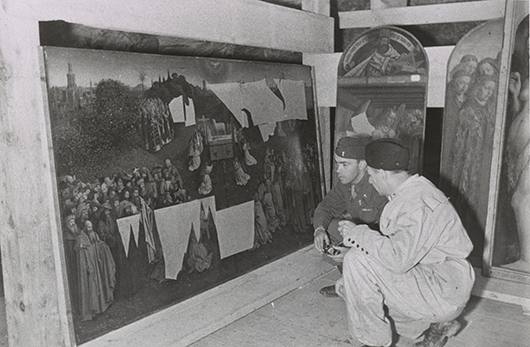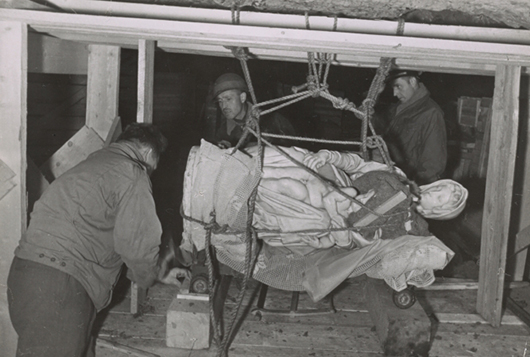
WASHINGTON – The Smithsonian’s Archives of American Art exhibition, “Monuments Men: On the Frontline to Save Europe’s Art, 1942-1946,” will present original photographs, official military records and letters that chronicle this extraordinary mission. Visitors will be able to hear the voices of Monuments Men through excerpts of interviews from the Archives’ Oral History Collection. The exhibition will be on display from Feb. 7 to April 20 in the Lawrence A. Fleischman Gallery at the Smithsonian’s Donald W. Reynolds Center for American Art and Portraiture.
During World War II, an unlikely team of soldiers was charged with identifying and protecting European cultural sites, monuments and buildings from Allied bombing. Officially named the Monuments, Fine Arts and Archives Section, this U.S. Army unit included art curators, scholars, architects, librarians and archivists from the United States and Great Britain. The unit quickly became known as the Monuments Men. Towards the end of the war, their mission changed to one of locating works of art that had been looted by the Nazis. The Monuments Men recovered some of history’s greatest works of art hidden across Germany and Austria—some in castles, others in salt mines.
The Smithsonian’s Archives of American Art holds the personal papers and oral-history interviews of several key Monuments Men, including George Leslie Stout, James J. Rorimer, Walker Hancock and Thomas Carr Howe.
The exhibition will feature the personal papers of many prominent Monuments Men and Women. The correspondence illuminates art conservator Stout’s efforts to establish a national wartime Conservation Corps and the challenges and hardships of working on the frontline of war. Historical records and photographs document the magnitude of the Nazi looting, including the collection of stolen artwork amassed by Nazi Germany’s second in command, Hermann Goering. The exhibition also documents the heroic efforts of Rorimer, one of the Monuments Men who located and removed France’s great art treasures from the magnificent Neuschwenstein Castle deep in the Bavarian Alps. Rorimer worked with Rose Valland, a French art curator who spied on the Nazis at great personal risk. Compelling photographs reveal how Monuments Men George Stout and others recovered treasures like Jan and Hubert van Eyck’s “Ghent Alterpiece” and Michelangelo’s famous Bruges sculpture “Madonna and Child” from the Altaussee salt mines in Austria.
ADDITIONAL IMAGES OF NOTE



